Crafting the Offer: Products
Branding
The concept and study of branding has a rich academic history, with several seminal works shaping our understanding of this field. This section draws from some of the most influential academic literature on branding[1][2].
Brand History
The historical source of the term “brand” can be traced back to the Old Norse word brandr, which means “to burn.” This term originally referred to the practice of burning a mark onto livestock to signify ownership. Over time, the concept of branding evolved beyond livestock.
Artisans and merchants began using unique marks to indicate the source of their products, serving as a form of quality assurance. This practice was evident in ancient civilizations such as China, India, Greece, Rome, and Mesopotamia — where pottery and other goods were marked to identify their origin and craftsmanship.[3][4]
As we can see, the term “brand” has its roots in ancient practices of marking ownership and has evolved into a complex concept involving identity, perception, and differentiation in modern marketing.
Brand Definition
There are many accepted definitions for the term “brand” in marketing literature. Here are two different definitions:
- “A brand is any distinctive feature like a name, term, design, or symbol that identifies goods or services.”[5]
- “A brand is the sum of all expressions by which an entity (person, organization, company, business unit, city, nation, etc.) intends to be recognized.”[6]
Brands create images that exist in your mind about products, organizations, and people.
Branding is the process of creating and managing the identity of a product, organization, or person. It encompasses the visual elements, messaging, and overall perception that consumers associate with a brand. Branding goes beyond just logos and design; it includes the experiences, feelings, and ideologies that a brand represents.
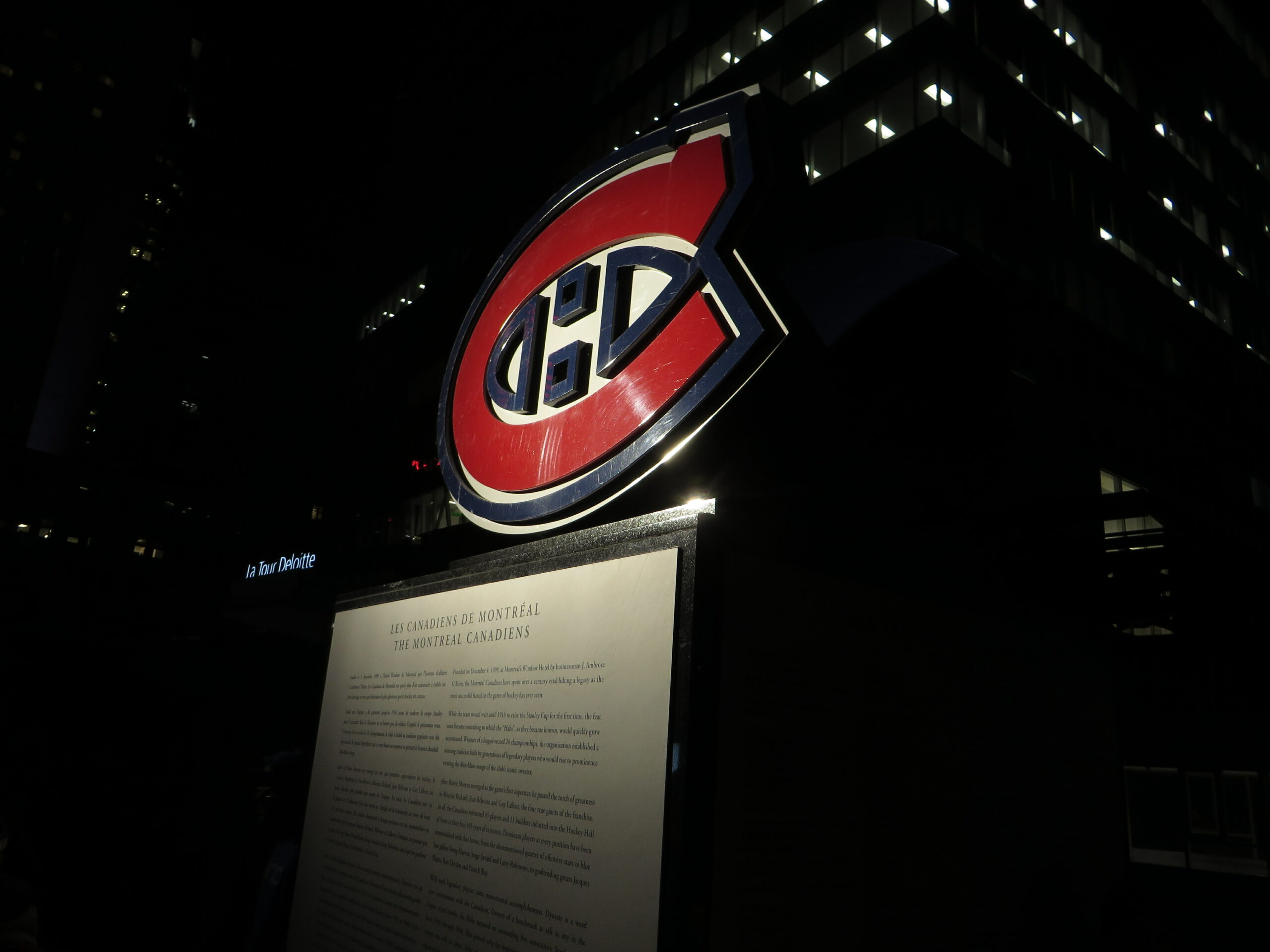
Brands are Powerful
When you think of your favorite brands, you probably identify some of the traits or features of its products or services that explain rationally what makes it better than others. But rational explanations are just part of the story. Brands make you feel a certain way, and that feeling is difficult for any other brand to replicate.
Strong brands:
- Are powerful because they also tap into emotions.
- Can cause people to spend more money on a product than they would otherwise.
- Can create a sense of loyalty and even a tribal effect of dedicated fans that always chooses one company’s product or services over another.
Brands are Complex
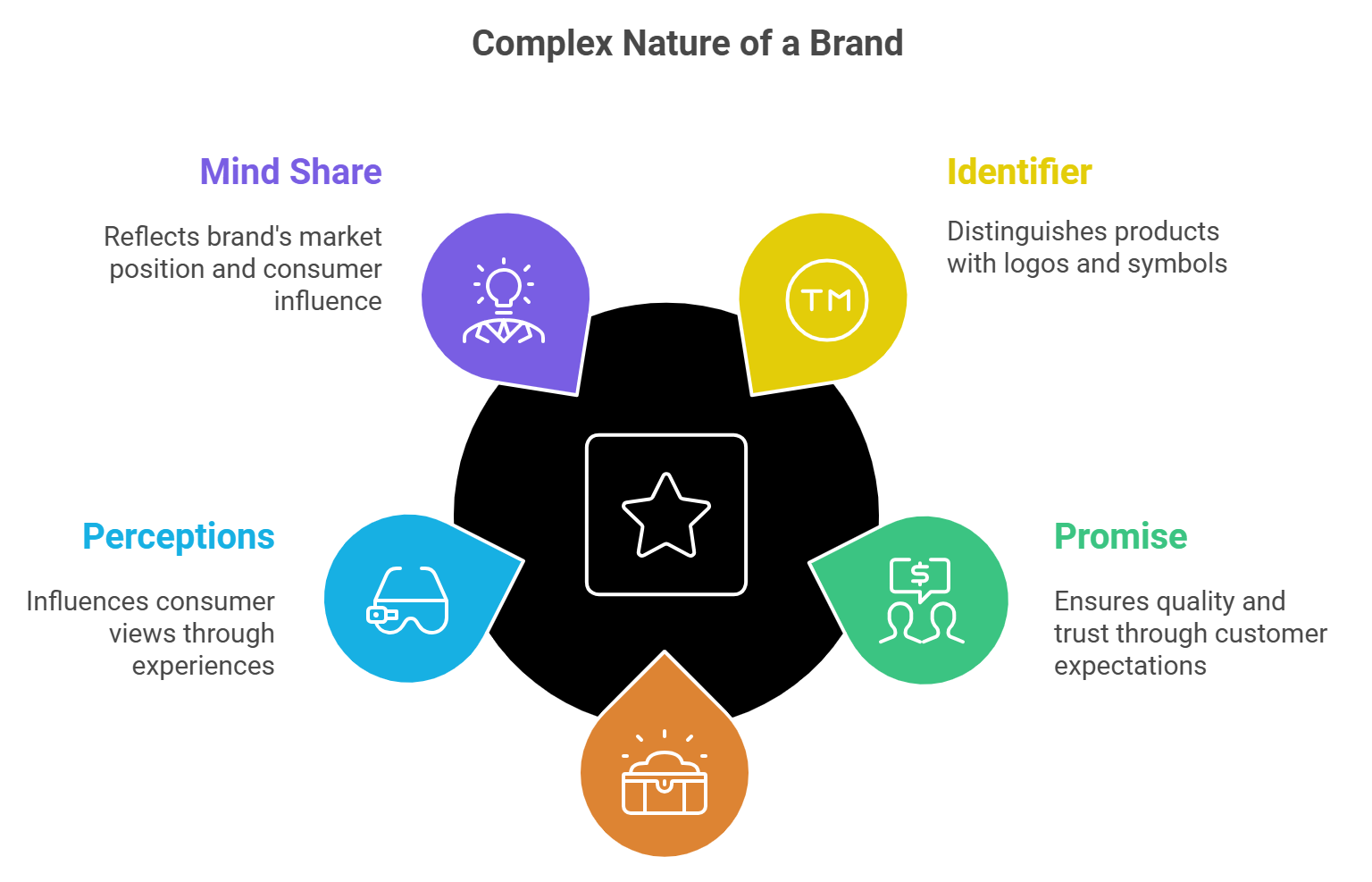
A brand is a(n):
- Identifier: A brand serves as an identifier that distinguishes a company’s products or services from those of competitors. This includes tangible elements like logos, names, symbols, and slogans.
- Example: The Apple logo is a globally recognized identifier that distinguishes its products from other technology brands.
- Promise: A brand represents a promise to customers about the quality, value, and experience they can expect. This promise builds trust and sets expectations for the brand’s offerings.
- Example: FedEx’s promise of reliable and timely delivery is encapsulated in its slogan, “When it absolutely, positively has to be there overnight.”
- Asset: A brand is a valuable intangible asset that contributes to a company’s overall worth. Strong brands can command premium pricing, foster customer loyalty, and provide competitive advantages.
- Example: Coca-Cola’s brand value is a significant asset, contributing to its market leadership and financial success.
- Set of Perceptions: A brand is a set of perceptions held by consumers about a company or product. These perceptions are shaped by experiences, marketing communications, and word-of-mouth.
- Example: Tesla is perceived as an innovative and environmentally conscious brand due to its focus on electric vehicles and sustainable energy solutions.
- “Mind Share”: A brand occupies a certain “mind share” in the consumer’s mind, representing the associations and emotions linked to the brand. It reflects the brand’s position in the market and its influence on consumer decisions.
- Example: Google holds significant mind share as the go-to search engine, often used as a verb (“to google”) for searching information online.
Elements of a Brand
A brand includes a combination of tangible and intangible elements.
Tangible Elements
Tangible elements include visual design elements and distinctive product features.
Visual Design Elements
Visual elements include:
- Logo: The logo is a graphical representation that serves as the face of the brand, making it easily recognizable. For example, the golden arches of McDonald’s are instantly identifiable worldwide.
- Color: The color palette used by a brand can evoke specific emotions and associations. For instance, Coca-Cola’s use of red is associated with excitement and energy.
- Typography: The fonts and styles used in branding materials help convey the brand’s personality and tone. A luxury brand might use elegant, serif fonts to convey sophistication.
- Images: Visual imagery, including photos and graphics, supports the brand’s message and identity. Travel companies often use images of destinations to inspire wanderlust.
- Tagline: A memorable phrase that encapsulates the brand’s promise or mission. Nike’s “Just Do It” is a classic example that motivates and inspires action.
- Packaging: For physical products, packaging design plays a crucial role in attracting customers and conveying brand values. Apple’s minimalist packaging reflects its focus on simplicity and innovation.
Distinctive Product Features
Distinctive product features include:
- Quality: The perceived quality of a product or service is a key element of a brand. Brands like Rolex are synonymous with high-quality craftsmanship.
- Design Sensibility: The aesthetic and functional design of a product can set a brand apart. Tesla’s sleek car designs reflect its innovative approach to electric vehicles.
- Personality: A brand’s personality is the set of human characteristics associated with it. For example, Red Bull’s adventurous and energetic personality is reflected in its marketing campaigns.
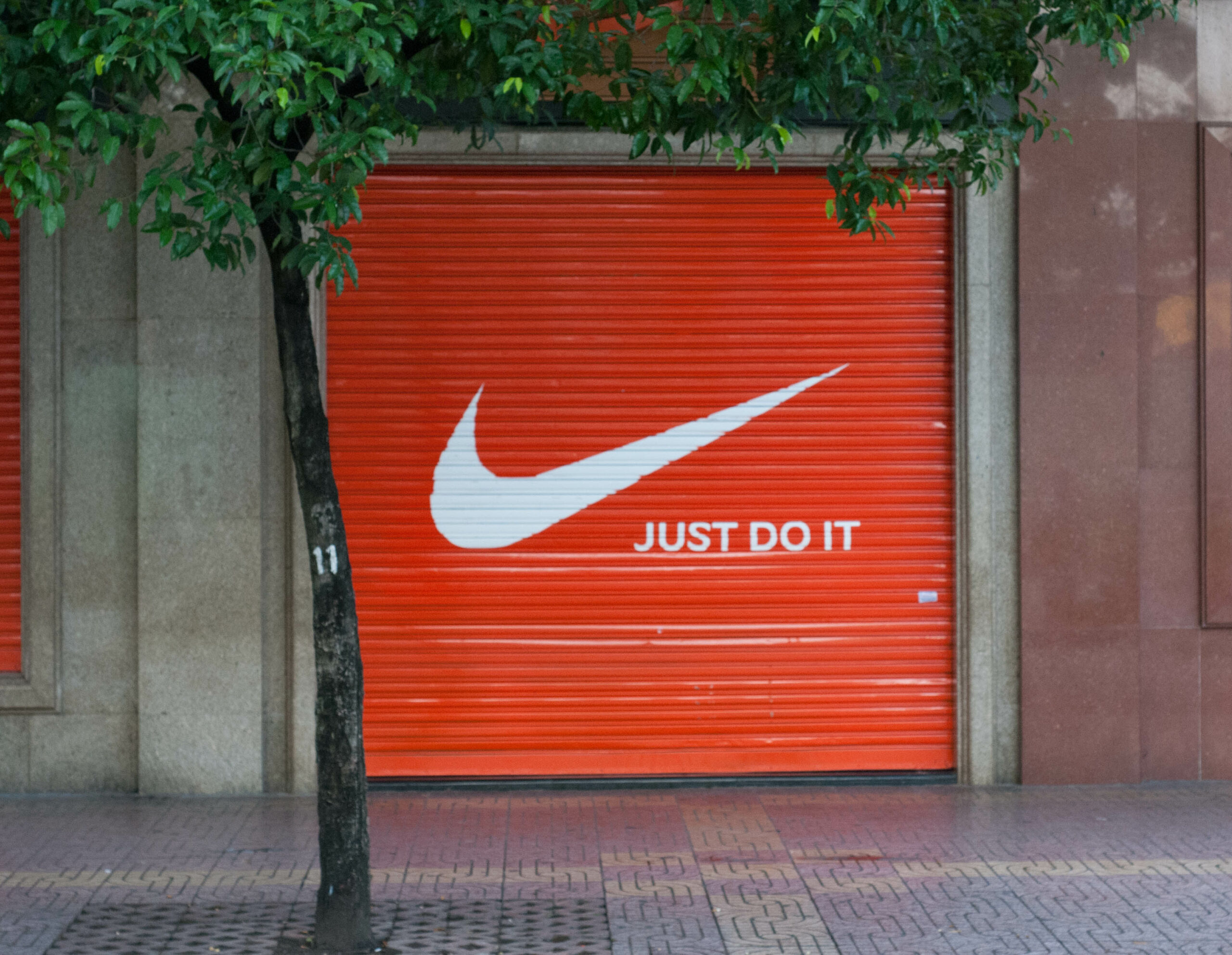
Intangible Elements
Intangible elements include reputation, customer experience, and emotional connection.
Reputation
A brand’s reputation is built over time through customer interactions, media coverage, and word-of-mouth. It reflects the trust and credibility a brand has earned. For example, Disney is known for its family-friendly entertainment and magical experiences.
Customer Experience
The overall experience a customer has with a brand, from initial contact to post-purchase support, is a critical intangible element. Brands like Amazon focus on providing seamless and convenient shopping experiences.
Emotional Connection
Successful brands often create an emotional connection with their customers, fostering loyalty and advocacy. Harley-Davidson, for instance, evokes a sense of freedom and rebellion, resonating deeply with its community of riders.
Types of Brands
Brands can take various forms, each serving different purposes and targeting specific audiences. These include:
- Individual products
- Product ranges
- Services
- Organizations
- Individual persons
- Groups
- Events
- Geographic places
- Private label brands
- Media
- E-brands
Individual Products
An individual product brand is specific to a single product, giving it a unique identity separate from other products offered by the same company.
Examples
Individual Products
Procter & Gamble’s Tide detergent is an individual product brand that operates independently from other P&G products like Gillette or Pampers.
The “Heavenly Bed” by Westin Hotels & Resorts is an individual product brand that highlights a specific feature of the hotel experience, enhancing guest comfort and setting Westin apart from competitors.
Product Ranges
Product range brands encompasses a range of related products, often under a single brand name.
Examples
Product Ranges
Apple’s iPhone product range includes various models and versions, all under the iPhone brand, offering different features and price points.
Marriott Bonvoy is a product range brand that encompasses various loyalty programs and benefits across Marriott’s portfolio of hotels, offering guests a consistent and rewarding experience.
Services
Service brands represents a service offered by a company, focusing on the customer experience and service quality.
Examples
Services
FedEx is a service brand known for its reliable and fast delivery services.
Airbnb is a service brand that provides a platform for booking accommodations and experiences, focusing on the unique and local aspects of travel rather than owning physical properties
Organizations
Organization brands represents an entire organization, reflecting its values, culture, and mission.
Examples
Organizations
Google is a corporate brand that encompasses a wide range of products and services, from search engines to cloud computing.
Hilton Worldwide Holdings Inc. is an organizational brand that represents a wide range of hotel brands under its umbrella, from luxury to mid-scale offerings, providing consistent quality and service across its properties
Individual Persons
Personal branding where an individual becomes the brand, often used by celebrities, influencers, and public figures.
Examples
Individual Persons
Oprah Winfrey has developed a personal brand that encompasses her media presence, philanthropic efforts, and lifestyle products.
Celebrity chefs like Gordon Ramsay have personal brands that extend into the hospitality industry, with restaurants and culinary experiences that reflect their personal style and reputation.
Groups
Group brands represents a collective group, such as a band, sports team, or advocacy group.
Example
Groups
The Beatles is a brand representing the iconic music group and is known for its influence on music and culture.
Events
Event brands are associated with a specific event, often recurring, that creates a unique experience for attendees.
Examples
Events
The Olympics is a globally recognized event brand known for its sports competitions and international participation.
The Cannes Film Festival is an event brand that attracts filmmakers, celebrities, and tourists to the French Riviera; it is known for its prestige and influence in the film industry.
Geographic Places
Geographic place brands are associated with a specific location, promoting its unique attributes and attractions.
Example
Geographic Places
Las Vegas is a geographic brand known for its entertainment, casinos, and nightlife.
Private Label Brands
Private label brands are owned by a retailer or supplier and sold exclusively in their stores.
Examples
Private Label Brands
Walmart’s Great Value is a private label brand offering a wide range of products at competitive prices.
Costco’s Kirkland Signature brand includes travel packages and vacation deals, offering members exclusive access to discounted travel experiences.
Media
Media brands are associated with media outlets, including television networks, publications, and online platforms.
Examples
Media
CNN is a media brand known for its news coverage and global reach.
Travel + Leisure is a media brand that provides travel content, guides, and recommendations — influencing travelers’ choices and perceptions of destinations.
E-Brands
E-brands exist primarily online, offering digital products or services.
Examples
E-Brands
Amazon is an e-brand known for its e-commerce platform and digital services.
Expedia is an e-brand that offers online travel booking services, providing customers with a convenient platform to plan and book their trips.
Brand Dimensions
A brand can convey meaning through various dimensions, including:
- Attributes
- Benefits
- Values
- Culture
- Personality
- User associations
Each of these elements contributes to how a brand is perceived and experienced by consumers.

Attributes
The specific characteristics and features that define a brand. These can be tangible, such as the quality of service, or intangible, like brand reputation.
Example
Attributes
The Ritz-Carlton is known for its luxurious accommodations and service. The brand’s attributes include high-quality amenities, elegant design, and attention to detail, which set it apart as a leader in luxury hospitality.
Benefits
The advantages or positive outcomes that consumers associate with a brand. These can be functional, emotional, or experiential.
Example
Benefits
Airbnb offers the benefit of unique and personalized travel experiences by allowing guests to stay in local homes, providing an authentic experience that traditional hotels may not offer.
Values
The core principles and beliefs that guide a brand’s actions and decisions. They reflect what the brand stands for and are often aligned with the values of its target audience.
Example
Values
Six Senses Hotels, Resorts, and Spas emphasize sustainability and wellness as core brand values, attracting environmentally conscious travelers who value eco-friendly practices.
Culture
Culture encompasses the shared values, beliefs, and practices within a brand and how it interacts with the broader cultural context.
Example
Culture
Disney Parks and Resorts embody a culture of magic and imagination, creating a unique and enchanting environment for visitors that reflects the brand’s commitment to family-friendly entertainment.
Personality
The human characteristics attributed to a brand. It shapes how consumers emotionally connect with the brand.
Example
Personality
Virgin Atlantic is known for its bold and innovative personality, appealing to travelers who value a lively and unconventional flying experience.
User
Relates to the typical consumer who uses the brand. It can influence how the brand is perceived by others.
Example
User
Marriott Bonvoy targets frequent travelers who value loyalty rewards and consistent quality, attracting business travelers and vacationers who appreciate the benefits of a comprehensive loyalty program.
Characteristics of a Strong Brand
Strong brands have the characteristics listed in the table below.
| Characteristic | Definition | Example |
|---|---|---|
| Clearly delivers a message | A strong brand clearly communicates its message to its target audience, ensuring that consumers understand what the brand stands for and what it offers. | Volvo’s brand message emphasizes safety and reliability, making it the go-to option for consumers seeking a safe vehicle. |
| Confirms the brand’s credibility in the marketplace | A strong brand establishes credibility by consistently delivering on its promises and maintaining high-quality standards. | Patagonia’s commitment to environmental sustainability and ethical business practices reinforces its credibility and attracts environmentally conscious consumers. |
| Emotionally connects target prospects with a product or service | A strong brand connects with consumers on an emotional level, fostering loyalty and advocacy. | Disney creates magical experiences that evoke emotions of joy and nostalgia, building a strong emotional bond with its audience. |
| Motivates the buyer to make a purchase | A strong brand motivates consumers to make a purchase by clearly demonstrating the value and benefits of its products or services. | Apple’s innovative design and user-friendly technology motivate consumers to invest in its products, despite higher price points. |
| Creates user loyalty | A strong brand cultivates loyalty by consistently meeting or exceeding customer expectations, leading to repeat business and positive word-of-mouth. | Starbucks’ focus on personalized customer experiences and high-quality coffee fosters a loyal customer base. |

A strong brand will in turn build brand equity
Brand Equity
Brand equity refers to the value a brand adds to a product or service, beyond its functional attributes. This value is derived from consumer perceptions, experiences, and associations with the brand.
Brand equity is:
- The value premium that a company generates from a product with a recognizable name, compared to a generic equivalent.
- The measure of a brand’s worth and the influence on customer behaviour, perception, and decision-making.
- The value and strength of a brand’s reputation in the market.
Example
Brand Equity is Worth More Than You May Think!
Brand equity is a powerful asset that often holds more value than many people realize.
Visit Brand Finance’s Equity Rankings[7] for insights into the world’s most valuable and strongest brands.
Components of Brand Equity
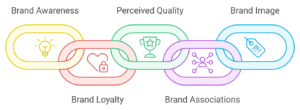
The components of brand equity include:
- Brand Awareness: The extent to which consumers are familiar with and recognize a brand. High brand awareness increases the likelihood of consumers choosing the brand over competitors.
- Brand Loyalty: The degree to which consumers consistently choose a specific brand over others. Loyal customers contribute to stable sales and can act as brand advocates.
- Perceived Quality: The level of quality that consumers associate with a brand. Brands perceived as high-quality can command premium prices and enjoy a competitive advantage.
- Brand Associations: The emotional or psychological associations that consumers connect with a brand, such as feelings of trust, reliability, or nostalgia.
- Brand Image: The perception of attributes that consumers have of a brand, such as quality, reliability, and uniqueness.
Example
Components of Brand Equity
To illustrate the components of brand equity, let’s consider a scenario involving a fictional Canadian eco-friendly adventure tourism company called “Frontier Spirit Expeditions.”

Frontier Spirit Expeditions is a tour operator specializing in sustainable wilderness experiences across Canada’s diverse landscapes. Let’s examine how each component of brand equity contributes to their overall success:
Brand Awareness: Frontier Spirit Expeditions has invested in targeted marketing campaigns showcasing Canada’s natural beauty and their commitment to responsible tourism. They have partnered with popular travel influencers and environmental organizations to increase visibility. As a result, when Canadians think of eco-friendly adventure tours, Frontier Spirit Expeditions often comes to mind first.
Brand Loyalty: The company has cultivated a loyal customer base through exceptional service and memorable experiences. They offer a rewards program called “Wilderness Rewards” where repeat customers earn points towards free trips or exclusive experiences. Many satisfied customers become brand advocates, sharing their experiences on social media and recommending Frontier Spirit Expeditions to friends and family.
Perceived Quality: Frontier Spirit Expeditions has built a reputation for high-quality, expertly guided tours that prioritize both guest safety and environmental conservation. They use top-of-the-line eco-friendly equipment and employ highly trained local guides. This perception of quality allows them to charge premium prices for their tours, attracting discerning travelers who are willing to pay more for a superior experience.
Brand Associations: The company has successfully associated its brand with values such as environmental stewardship, adventure, and authentic Canadian experiences. Customers associate Frontier Spirit Expeditions with the feeling of connecting with nature, learning about local ecosystems, and contributing to conservation efforts. These positive associations strengthen the emotional bond between the brand and its customers.
Brand Image: Frontier Spirit Expeditions has cultivated an image of being the go-to company for responsible, educational, and exciting wilderness adventures in Canada. They’re known for their commitment to minimizing environmental impact, supporting local communities, and providing unique, off-the-beaten-path experiences. This image sets them apart from competitors and attracts environmentally conscious travelers looking for more than just a typical vacation.
Summary
By effectively developing these five components of brand equity, Frontier Spirit Expeditions has created a strong, recognizable brand in the competitive tourism industry.
Their brand equity allows them to:
- Command premium prices for their tours.
- Enjoy high customer retention and word-of-mouth referrals.
- Weather economic downturns better than less established competitors.
- Expand into new markets or tour offerings more easily.
- Attract top talent in the industry who want to work for a respected brand.
This example demonstrates how a company can leverage the components of brand equity to create a powerful, memorable brand that resonates with its target audience and drives long-term success.
Importance of Brand Equity
Having strong brand equity can result in the following:
- Competitive Advantage: They an differentiate themselves from competitors, command higher prices, and foster customer loyalty.
- Financial Performance: They can lead to increased sales, profitability, and market share. It also allows companies to expand product lines under the same brand name, leveraging existing consumer trust.
- Resilience: They are better positioned to withstand market challenges and recover from negative events, as they have established a strong reputation and customer base.
Brand Strategy
Branding is a strategic process that involves creating a unique identity and image for an organization or product, or person in the minds of consumers. To create a strong identity, a brand relies on a solid platform, with its elements aligned, so that it is perceived positively and uniquely in the eyes of its target market(s).
The brand platform provides the strategic foundation, brand alignment ensures consistency in execution, and brand positioning defines how the brand is uniquely positioned in the market. Together, these elements work to create a cohesive and differentiated brand identity.
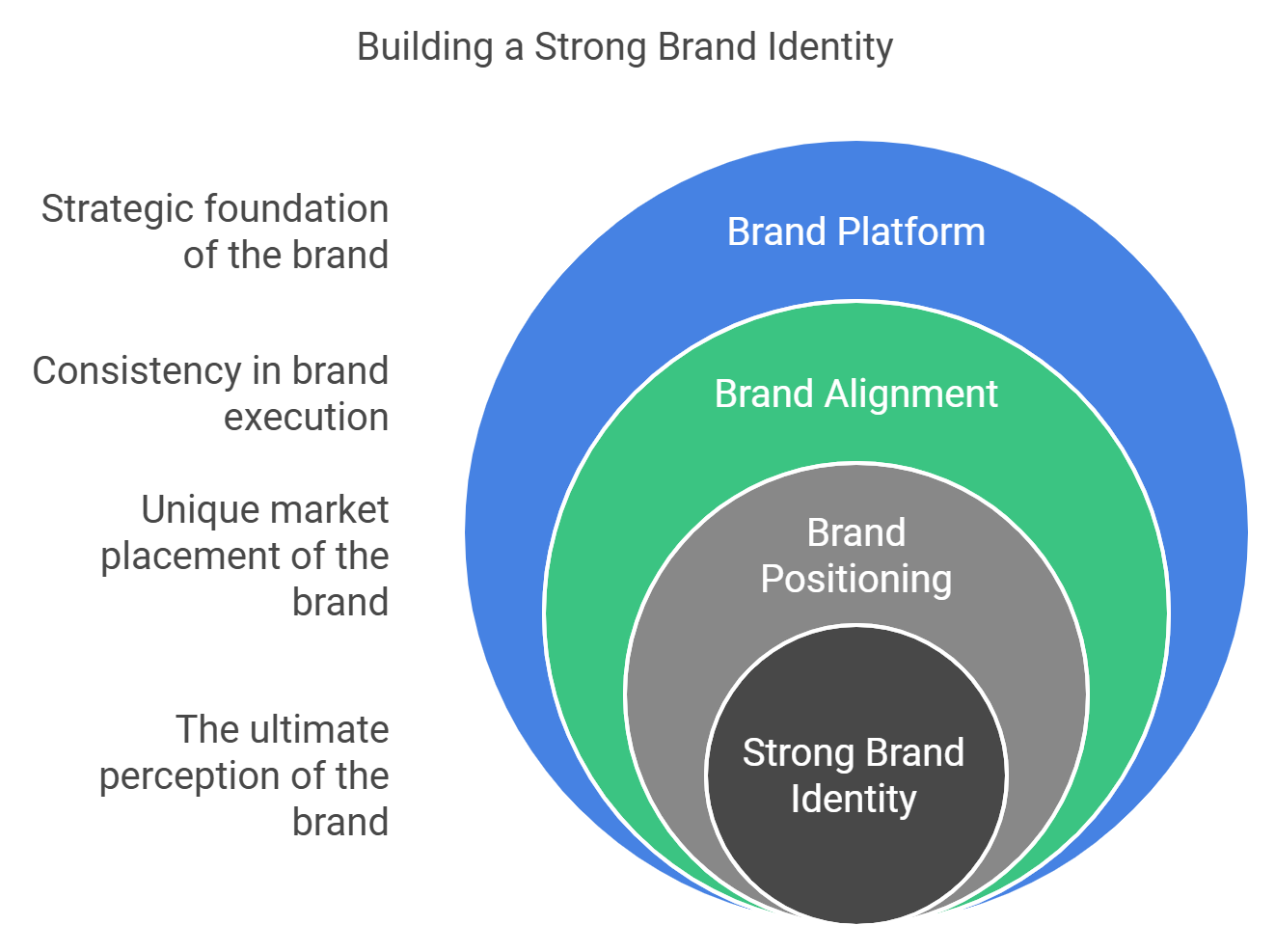
Brand Platform
A brand platform is a framework that defines the core elements of a brand’s identity and guides all brand-related activities.
Key components typically include:
- Brand Mission: The brand’s purpose and the value it aims to offer.
- Brand Vision: The brand’s long team goals and aspirations.
- Brand Values: Principles that guide the brand’s actions and decisions.
- Brand Personality: Human characteristics attributed to the brand.
- Target Audience: The primary consumers the brand aims to reach.
- Key Messaging Points: Core messages that communicate the brand’s identity and value.
It serves as the foundation for maintaining brand consistency and alignment across all aspects of the brand.
Brand Alignment
Brand alignment refers to how consistent and cohesive a brand is internally and externally.
Benefits of brand alignment include:
- Building customer trust through consistent experiences
- Increasing employee engagement by aligning with brand purpose
- Improving marketing and sales results
- Protecting brand assets
Achieving alignment requires ensuring internal stakeholders understand the brand and delivering on brand promises externally.
Brand Positioning
Brand positioning is how a brand is perceived in relation to competitors in the minds of customers. It involves defining the unique value proposition and differentiators of a brand.
Key elements of positioning include:
- Target audience
- Frame of reference (product/service category)
- Point of difference (unique benefits)
- Reasons to believe (proof points)
A positioning statement articulates how a brand wants to be perceived by its target audience.
Example
Red Bull’s Brand Strategy
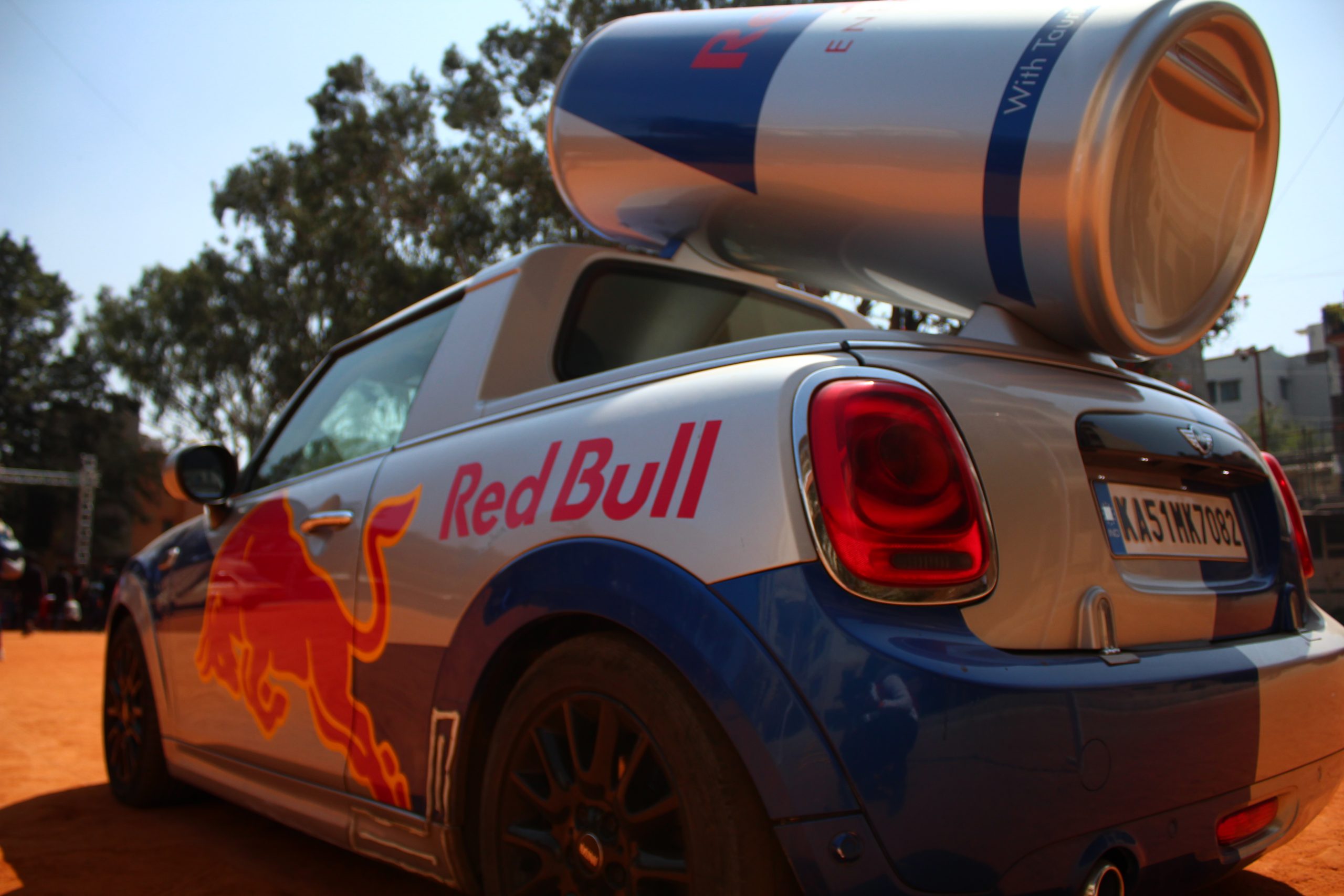
Red Bull’s brand strategy[8] is a masterclass in creating a powerful, consistent, and engaging brand identity. Let’s explore the key components of their strategy.
Brand Platform
Red Bull’s brand platform is built on the foundation of energy, adventure, and pushing limits. Their iconic slogan, “Red Bull gives you wings,” encapsulates the brand’s promise of providing an energy boost that enables consumers to achieve extraordinary feats.
This platform is supported by several key elements:
- Core Values: Energy, adventure, innovation, and high performance.
- Brand Essence: Empowering individuals to exceed their limits.
- Brand Promise: Enhancing physical and mental performance.
Brand Alignment
Red Bull ensures strong brand alignment across all touchpoints, creating a cohesive and recognizable brand experience.
Content Strategy: Red Bull’s content revolves around authenticity and aligning with its brand identity. They produce a wide range of content that reflects their core values of energy, adventure, and pushing limits.
This content includes:
- High-quality videos of extreme sports events
- Behind-the-scenes footage of athletes
- Immersive documentaries
- Articles and interviews related to adventure and performance
Visual Identity: The brand maintains a consistent visual identity across all platforms:
- Logo: Two charging red bulls with a yellow sun background, symbolizing power and energy
- Color Scheme: Predominantly blue, silver, and red — creating a bold and energetic visual impact
- Packaging: Sleek, modern design that conveys a premium, high-quality feel
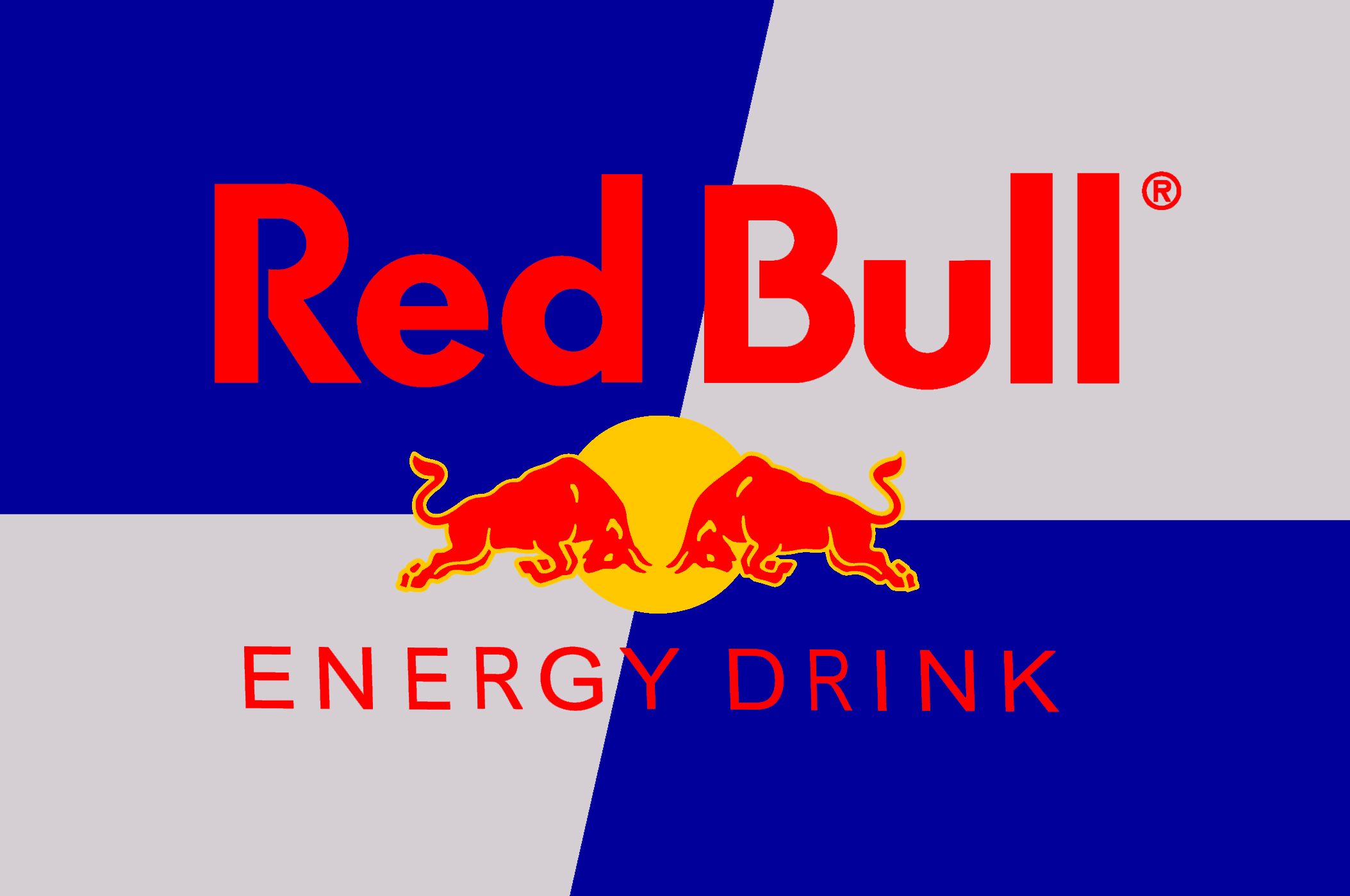
Sponsorships and Events: Red Bull aligns its brand with activities that reinforce its identity:
- Sponsoring extreme sports events (e.g., Red Bull Flugtag and Red Bull Air Race)
- Partnerships with Formula 1 racing teams and drivers
- Involvement in music festivals and cultural events
Brand Positioning
Red Bull has successfully positioned itself as more than just an energy drink; it is a lifestyle brand associated with adventure, vitality, and pushing boundaries. Key aspects of their positioning include its target audience, unique selling proposition, and brand associations.
Target Audience: Red Bull focuses on young adults aged 18–34 who lead active lifestyles and seek energy boosts for their various activities.
This audience includes:
- College students
- Young professionals
- Sports enthusiasts
- Adrenaline junkies
Unique Selling Proposition: Red Bull differentiates itself by offering not just an energy drink, but an entire lifestyle and experience.
Their positioning emphasizes:
- Performance Enhancement: Both physical and mental.
- Adventure and Excitement: Association with extreme sports and daring feats.
- Premium Quality: Justifying a higher price point compared to competitors.
Brand Associations: Red Bull has cultivated strong associations with:
- Extreme sports and adventure
- High-energy activities and events
- Innovation and pushing boundaries
- Youth culture and trendsetting
Summary
By consistently applying these elements across all aspects of their marketing and operations, Red Bull has created a powerful and distinctive brand that resonates deeply with its target audience. This comprehensive brand strategy has been instrumental in Red Bull’s success, allowing them to dominate the energy drink market and expand their influence into various lifestyle sectors.
Watch the following videos to learn more:
“How Red Bull Makes Money” [8:03 min] by Athletic Interest[9]
If you are using a printed copy, you can scan the QR code with your digital device to go directly to the video: How Red Bull makes money

“How Red Bull Got Us Hooked on Energy” [6:08 min] by Bloomberg Originals[10]
If you are using a printed copy, you can scan the QR code with your digital device to go directly to the video: How Red Bull got us hooked on energy

“Brand Master Academy: Brand Storytelling Strategy [Red Bull Example & Case Study]” [8:10 min] by Brand Master Academy[11]
If you are using a printed copy, you can scan the QR code with your digital device to go directly to the video: Brand Master Academy: Brand storytelling strategy [Red Bull example & case study]

Examples
Branding Strategies
Here are some branding strategies with examples.
Branded House
A branded house is a single brand name that supports multiple related products or services. This strategy leverages the brand equity of the parent brand across all offerings.
| Brand | Strategy |
Image
|
|---|---|---|
| Apple | Offers a range of products like iPhone, iPad, and Mac under the Apple brand, maintaining a consistent brand identity and reputation. |
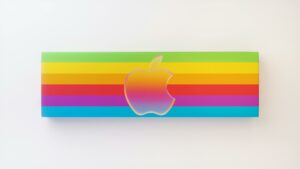 |
| Provides various services such as Google Search, Google Maps, and Google Drive, all under the Google brand. |
 |
|
| Virgin | Uses the Virgin brand across diverse sectors, including airlines (Virgin Atlantic), music (Virgin Records), and telecommunications (Virgin Mobile). |
 |
House of Brands
A house of brands is a parent company that owns multiple distinct brands, each with its own identity and target market.
| Brand | Strategy |
Image
|
|---|---|---|
| Unilever | Owns a variety of brands like Dove, Axe, and Lipton, each with distinct branding and marketing strategies. |
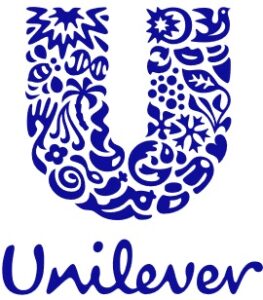 |
| Marriott International | Marriott International is a prime example of a house of brands in the hospitality industry. With over 30 distinct brands, Marriott targets various traveler segments and price points. |
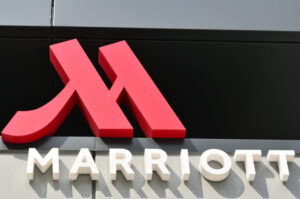 |
Private Label or Store Branding
Private label or store branding is when retailers create their own branded products, often positioned as lower-cost alternatives to national brands.
| Brand | Strategy |
Image
|
|---|---|---|
| Walmart | Offers Great Value and Equate as private label brands, providing cost-effective alternatives to national brands |
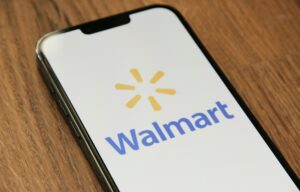 |
“No Brand” Branding
“No brand” branding is a minimalist approach that emphasizes simplicity and quality without relying on a prominent brand name.
| Brand | Strategy |
Image
|
|---|---|---|
| Muji | A Japanese retailer known for its no-logo, minimalist products that focus on functionality and simplicity. |
 |
Personal Branding
Personal branding focused on an individual to build reputation and influence.
| Brand | Strategy |
Image
|
|---|---|---|
| Anthony Bourdain | Known for his travel and culinary exploration shows, Anthony Bourdain’s personal brand was built around his unique storytelling style and deep cultural insights. His brand emphasized authenticity and a passion for discovering local cuisines and cultures, making him a respected figure in both the travel and culinary worlds. |
 |
| Richard Branson | As the founder of the Virgin Group, Richard Branson’s personal brand is synonymous with adventure and innovation. His ventures in the tourism sector, such as Virgin Atlantic Airways and Virgin Galactic, reflect his adventurous spirit and commitment to pushing boundaries in travel experiences. |
 |
“Designing a Purposeful Personal Brand From Zero to Infinity | Tai Tran | TEDxBerkeley ” [10:07 min] by TEDx Talks[12]
If you are using a printed copy, you can scan the QR code with your digital device to go directly to the video: Designing a purposeful personal brand from zero to infinity | Tai Tran | TEDxBerkeley

“Powerful Personal Branding | Ann Bastianelli | TEDxWabashCollege” [22:22 min] by TEDx Talks[13]
If you are using a printed copy, you can scan the QR code with your digital device to go directly to the video: Powerful personal branding | Ann Bastianelli | TEDxWabashCollege

Organizational Branding
Organizational branding focused on an organization to build reputation and influence.
The Global RepTrak 100 is an annual report produced by The RepTrak Company that ranks the world’s most reputable companies. The top five most reputable companies for 2024 are:
- LEGO Group
- Mercedes-Benz Group
- Rolex
- Sony
- Canon
Place Branding
Place branding strategies aimed at promoting geographic locations to attract tourists, residents, or businesses.
| Brand | Strategy |
Image
|
|---|---|---|
| Las Vegas | Known for its vibrant nightlife and entertainment, with the famous tagline “What Happens in Vegas, Stays in Vegas.” |
 |
Visit The Place Brand Observer’s website[14] for place branding case studies and examples around the world
Co-Branding
Co-branding is when two or more brands collaborate to create a joint product or marketing campaign.
| Brand | Strategy |
Image
|
|---|---|---|
| GoPro + Red Bull | A partnership that combines GoPro’s action cameras with Red Bull’s extreme sports events to create engaging content. |
 |
Licensing
A licensing brand allows another company to use its name or logo in exchange for a fee or royalty.
| Brand | Strategy |
Image
|
|---|---|---|
| Monopoly + McDonald’s | McDonald’s uses the Monopoly brand for its promotional games. |
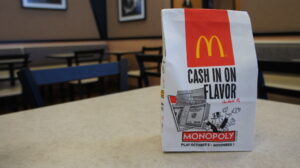 |
Brand Extensions
Brand extensions involve using an existing brand name to launch new products in different categories. Brand extensions include Apple’s expansion from computers to smartphones and wearables.
Brand Line Extensions
Brand line extensions involve using an existing brand name to launch variations of existing products, such as Coca-Cola offering Diet Coke.
Legal Protection of a Brand
Legal protection of a brand is necessary to maintain its identity, reputation, and market position. It involves securing intellectual property rights, such as trademarks and copyrights, to prevent unauthorized use, infringement, and counterfeiting. This protection is essential for safeguarding the brand’s uniqueness and ensuring that consumers can trust the quality and authenticity associated with it.

Trademark Protection: A trademark is a distinctive sign, symbol, word, or phrase that identifies and distinguishes the source of a product or service. Trademark registration is essential for protecting a brand’s identity and preventing others from using similar marks that could confuse consumers.
Copyright Protection: Copyright provides protection against unauthorized reproduction of creative works, such as drawings, writings, audiovisual productions, and more. It ensures that creators have control over how their works are used and can benefit financially from their creations.
Generic Brands
Can a brand become too successful?
A brand can potentially become “too successful” in certain ways and become “generic.” This phenomenon is known as “genericide” or “trademark genericization.” This refers to a brand that has become so commonplace and widely used that its name becomes synonymous with the product category itself.
Brands become generic due to:
- Widespread Use: When a brand becomes extremely popular and widely used, people may start using the brand name to refer to the entire product category.
- Lack of Alternatives: If a brand dominates a market with few competitors, its name may become the default term for that type of product.
- Cultural Integration: The brand name becomes so ingrained in everyday language that people use it generically without thinking about the specific brand.
Examples
Brands that Became Generic

- Aspirin (Bayer): Originally a trademarked name for acetylsalicylic acid pain relievers, “Aspirin” became a generic term in some jurisdictions.
- Band-Aid (Johnson & Johnson): The adhesive bandage brand owned by Johnson & Johnson has become the generic term for any type of adhesive bandage.
- Google (Google): The search engine giant’s name has become a verb, with people often saying they will “google” something to refer to searching for information online, even if they are not using the Google search engine.
- Wine Cooler (Seagram): Originally a trademarked name for a type of alcoholic beverage, “Wine Cooler” has become a generic term.
- Pilates (Joseph Pilates): The term “Pilates” was once trademarked but has become a generic name for a form of physical exercise.
- Trampoline (Griswold-Nissen Trampoline Company): Once a trademarked name for a type of springboard, “Trampoline” is now universally used to describe such devices.
Media Attributions
- Figure 1: “Montreal Canadiens Monument, Centre Bell, Montreal, Quebec (29773569450)” by Ken Lund (2016), via Wikimedia Commons, is used under a CC BY-SA 2.0 license.
- Figure 2: “The complex nature of a brand” [created using Napkin.ai] by the author is under a CC BY-NC-SA 4.0 license.
- Figure 3: “Eleven” by michael davis-burchat (2012), via Flickr, is used under a CC BY-ND 2.0 license.
- Figure 4: “Brand dimensions” [created using Napkin.ai] by the author is under a CC BY-NC-SA 4.0 license.
- Figure 5: “‘Fairmont Banff Springs’ — Logo at Banff, Alberta Province (CA) September 2019 (49279215831)” by Ron Cogswell (2019), via Wikimedia Commons, is used under a CC BY 2.0 license.
- Figure 6: “Components of brand equity” [created using Napkin.ai] by the author is under a CC BY-NC-SA 4.0 license.
- Figure 7: “The hike to Moraine Lake was gorgeous” by Ali Kazal (2023), via Pexels, is used under the Pexels license.
- Figure 8: “Building a strong brand identity” [created using Napkin.ai] by the author is under a CC BY-NC-SA 4.0 license.
- Figure 9: “Red bull mini cooper vehicle” by Praison Frank (2021), via Pixahive, is used under a CC0 1.0 license.
- Figure 10: “Red Bull Logo Blue” by pscldot, via Flickr, is used under a CC BY-SA 2.0 license.
- Figure 11: “Design of Brand Logo” by Yusuf P (2021), via Pexels, is used under the Pexels license.
- Figure 12: “Google Search Engine on Screen” by Sarah Blocksidge (2022), via Pexels, is used under the Pexels license.
- Figure 13: “Airbus A330-343X ‘G-VINE’ Virgin Atlantic” by Alan Wilson (2015), via Wikimedia Commons, is used under a CC BY-SA 2.0 license.
- Figure 14: “Unilever-4(1)” by DeeDorm (2024), via Wikimedia Commons, is used under a CC0 1.0 license.
- Figure 15: “TorontoMarriottMarkham3” by Raysonho (2018), via Wikimedia Commons, is used under a CC0 1.0 license.
- Figure 16: “A close up of a cell phone on a table” by Marques Thomas (2022). via Unsplash, is used under the Unsplash license.
- Figure 17: “Muji Toronto Opening” by Andrea Williams (2014), via Flickr, is used under a CC BY-NC-ND 2.0 license.
- Figure 18: “Kitchen Confidential” by Thomas Cizauskas (2018), via Flickr, is used under a CC BY-NC-ND 2.0 license.
- Figure 19: “IMG_3024” by Dave Malkoff (2008), via Flickr, is used under a CC BY-NC-SA 2.0 license.
- Figure 20: “Las Vegas Sign Nightly” by LasVegasGuy (2014), via Wikimedia Commons, is used under a CC BY-SA 4.0 license.
- Figure 21: “Helmet of Mattias Ekström (S)” by EKSRX (2017), via Flickr, is used under a CC BY 2.0 license.
- Figure 22: “McDonalds Monopoly 2010 small bag – “CASH IN ON FLAVOR”” by Aranami (2010), via Flickr, is used under a CC BY 2.0 license.
- Figure 23: “Legal protection of a brand” [created using Napkin.ai] by the author is under a CC BY-NC-SA 4.0 license.
- Figure 24: “Close Up View Of Band Aids On Blue Surface” by Tara Winstead (2021), via Pexels, is used under the Pexels license.
- Allen, C. T., Fournier, S., & Miller, F. (2018). Brands and their meaning makers. In C. P. Haugtvedt, P. M. Herr, & F. R. Kardes (Eds.), Handbook of consumer psychology (1st ed., pp. 773-814). Routledge. https://www.researchgate.net/profile/Susan-Fournier-2/publication/256294005_Brands_and_their_Meaning_Makers/links/02e7e52222f27c0407000000/Brands-and-their-Meaning-Makers.pdf ↵
- Wood, L. (2000). Brands and brand equity: definition and management. Management decision, 38(9), 662–669. https://doi.org/10.1108/00251740010379100 ↵
- Moore, K., & Reid, S. (2008) The birth of brand: 4000 years of branding, Business History, 50(4), 419–432, https://doi.org/10.1080/00076790802106299 ↵
- Holt, D. B. (2004). How brands become icons: The principles of cultural branding. Harvard Business Press. ↵
- American Marketing Association. (n.d.). Branding. Retrieved November 28, 2024, from https://www.ama.org/topics/content-and-branding/ ↵
- Hertioga. C., & Christensen, J. (n.d.). What is a brand? Interbrand. Retrieved from https://interbrand.com/london/thinking/what-is-a-brand/ ↵
- Brand Finance. (n.d.). Global rankings: Brand rankings by sector and country. Retrieved December 9, 2024, from https://brandirectory.com/rankings/ ↵
- Gorse, S., Chadwick, S., & Burton, N. (2010). Entrepreneurship through sports marketing: A case analysis of Red Bull in sport. Journal of Sponsorship, 3, 348–357. ↵
- Althetic Interest. (2020, June 5). How Red Bull makes money [Video]. YouTube. https://youtu.be/cBRNQMolTPw?si=OsZ31e7uUti4-J55 ↵
- Bloomberg Originals. (2019, February 14). How Red Bull got us hooked on energy [Video]. YouTube. https://youtu.be/vo5c8_pk8L0?si=xPFeuzM1-Kak-S1z ↵
- Brand Master Academy. (2020, August 12). Brand Master Academy: Brand storytelling strategy [Red Bull example & case study] [Video]. YouTube. https://youtu.be/iqdTawJQN8w?si=xE66d5HrxqZgmIr6 ↵
- TEDx Talks. (2017, May 5).
 [Video]. YouTube. https://youtu.be/Alqt7pIbp_o?si=e3Vr6oSsWUumnLLK ↵
[Video]. YouTube. https://youtu.be/Alqt7pIbp_o?si=e3Vr6oSsWUumnLLK ↵ - TEDx Talks. (2017, February 22). Powerful personal branding | Ann Bastianelli | TEDxWabashCollege [Video]. YouTube. https://youtu.be/hcr3MshYe3g?si=T3w4ttSIsPgJujfD ↵
- The Place Brand Observer. (n.d.). Place branding examples – how to do it. Retrieved December 9, 2024, from https://placebrandobserver.com/place-branding-examples/ ↵
A distinctive feature like a name, term, design, or symbol that identifies goods or services and represents a company's reputation as perceived by the public.
The value a brand adds to a product or service beyond its functional attributes, derived from consumer perceptions, experiences, and associations.
The extent to which consumers are familiar with and recognize a brand, increasing the likelihood of consumers choosing the brand over competitors.
The tendency of consumers to consistently choose a specific brand over others, contributing to stable sales and brand advocacy.
The perception of attributes that consumers have of a brand, such as quality, reliability, and uniqueness.
A branding strategy where a company uses a single master brand across all its products and services.
A branding strategy where a company maintains separate and distinct brands for different products or services.
Is a type of intellectual property providing legal protection for brand names, symbols, and other distinctive brand elements. It includes any word, name, symbol, or design to distinguish the goods or services of one organization from those of others.
A type of intellectual property that provides legal protection, granting creators exclusive rights to their original works, such as literature, music, art, software, logos, and marketing materials.

